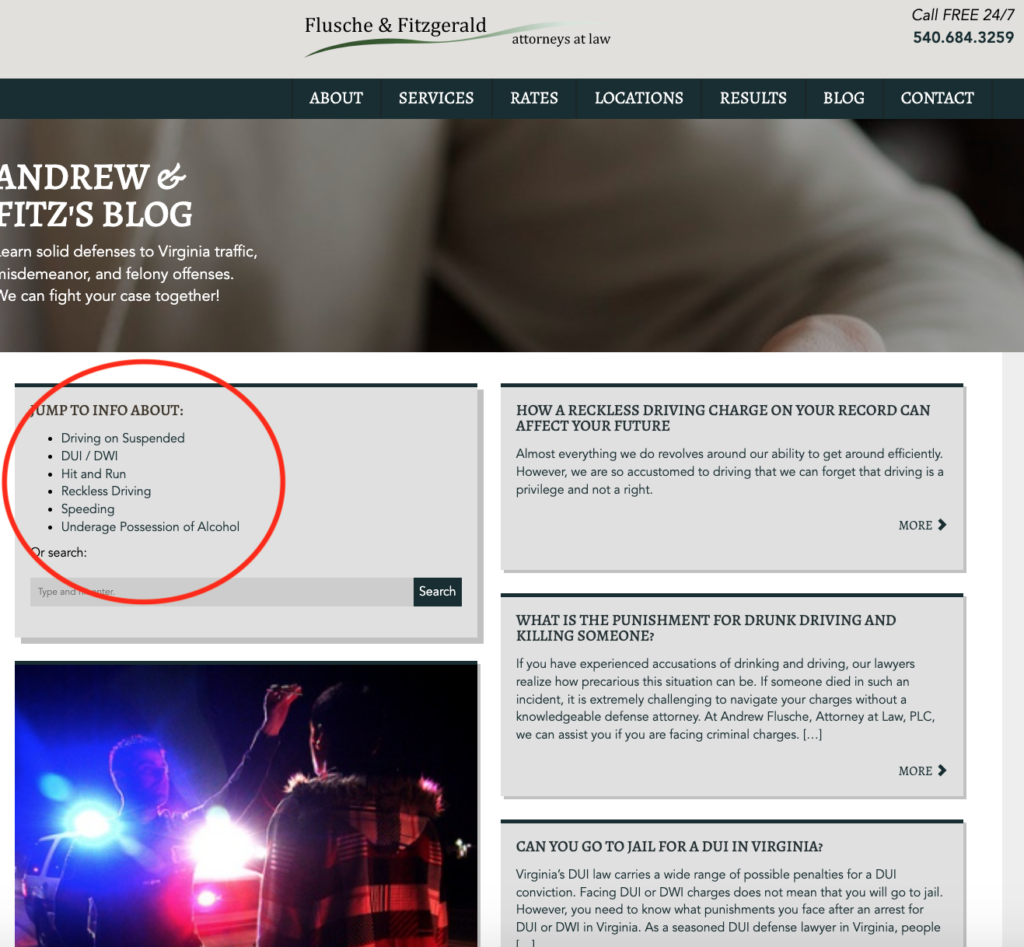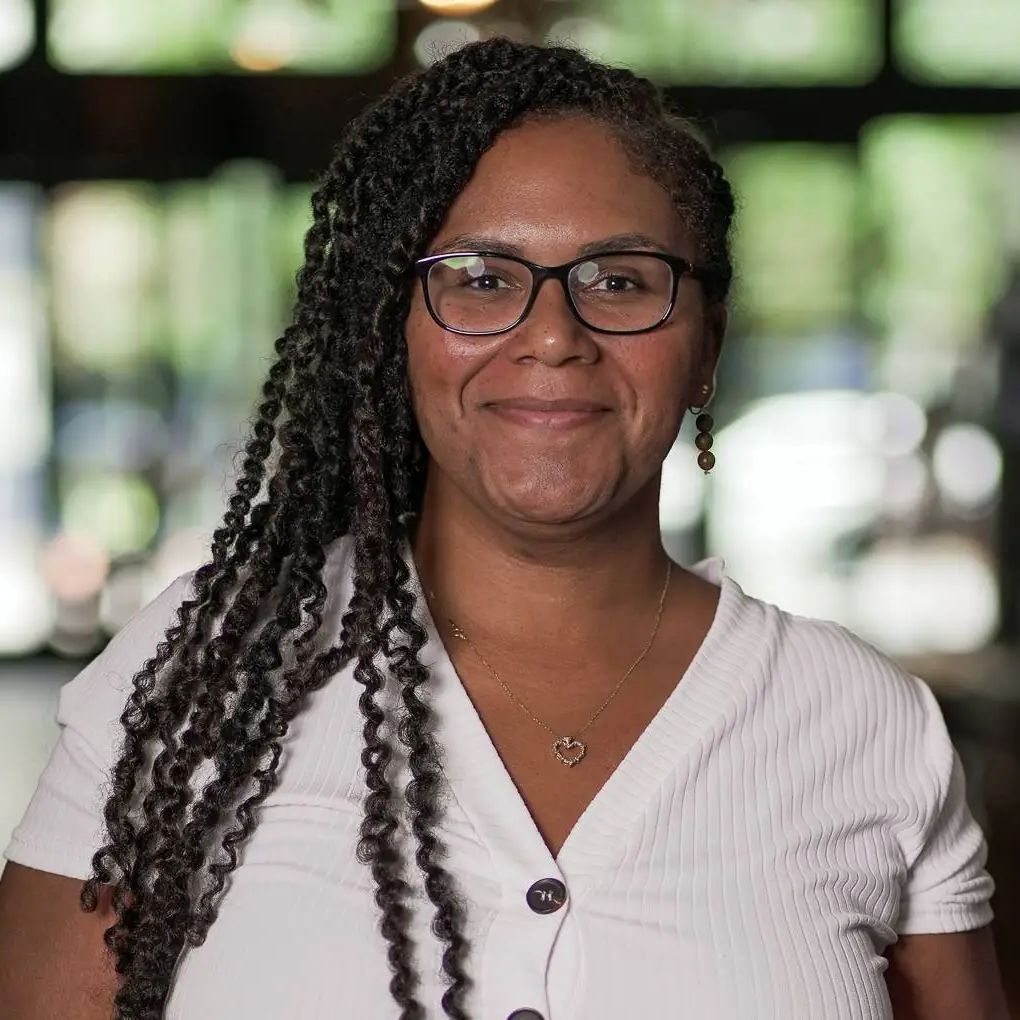If you’ve so much as dipped your toe into law firm marketing, you already know that there is a flood of legal marketing content out in the world.
From websites to TV commercials to bus-stop signage, law firm messaging can be found everywhere you look. On one hand, that’s a good thing—it proves marketing works. On the other hand, it’s a nightmare because the ubiquity of legal messaging makes it so much harder to stand out from the pack.
In today’s rapidly digitizing world, the key to attracting views and search engine crawlers is a consistent output of valuable content. There is no endpoint to a solid content marketing strategy—users and search engines will always want fresh information. Unfortunately, even the best writers and marketers—even AI!—run out of ideas eventually. So how are law firms supposed to plan out a never-ending content marketing campaign?
When we work with digital content marketing clients at Juris Digital, we use a marketing concept known as “content pillars” to guide our content creation. In very basic terms, content pillars outline the types of content that drive website traffic when optimized for search engines and can help your law firm generate new blog, social media, and video ideas to attract and convert website visitors. Believe it or not, you can incorporate content pillars in your law firm strategy quite easily. Let’s explore how to get started!
Understanding Content Pillars
Content pillars are comprehensive, thematic cornerstones for structuring your broader marketing content agenda. They represent the key areas of expertise or services your firm provides, effectively serving as the foundation of your law firm content strategy. These broad themes are then broken down into specific topics, ensuring a holistic approach to content development that boosts SEO and user engagement. It’s really as simple as that: content pillars are the topical tent poles that hold up your content marketing execution.
The Advantages of Content Pillars in Law Firm Strategy
Not every law firm marketing team out there uses content pillars. Flying by the seat of your pants can work if you have a dedicated marketing staff, but if you don’t have any marketing experience, it can be hard to know where to start, let alone where to go from there. There are some significant advantages establishing pillars gives your marketing content.
Expertise and Authority
Content pillars allow law firms to showcase their expertise in specific legal areas, such as practice areas. By consistently creating deep, insightful content around a few central themes, your firm positions itself as an authority figure, building trust with potential clients.
Related: Navigating Google’s E-E-A-T Principles for Law Firm Web Content
Improved SEO Rankings
Google prefers content-rich sites that provide comprehensive information on a subject. By aligning your law firm content strategy around content pillars, you enhance SEO performance, driving more organic traffic to your website.
Enhanced User Experience
Content pillars facilitate a structured and navigable content ecosystem on your law firm’s website. This structured approach makes it easier for visitors to find the information they’re seeking and enriches their browsing experience, potentially increasing the time they spend on your site.
Implementing Content Pillars in Your Firm’s Content Strategy
The adoption of content pillars into your law firm content marketing strategy requires a methodical approach:
- Identify your pillars. Start by evaluating your firm’s strengths and the needs of your target audience. If you specialize in personal injury law, for example, potential content pillars might include “Car Accident Claims,” “Workplace Injuries,” and “Medical Malpractice.”
- Develop rich pillar pages. For each pillar, create a central pillar page on your website that offers a comprehensive overview of the topic or practice area. This page should link to more detailed content relevant to the pillar, effectively serving as a hub for this type of content.
- Craft supporting content. Develop a range of content (like blogs, FAQs, case studies, infographics, videos, and social posts) that addresses specific questions or concerns related to each pillar, linking back to the pillar page to create a cohesive content ecosystem.
- Optimize for SEO. Use targeted keywords throughout your content, not just for SEO but also to ensure alignment with what your potential clients are searching for. “What to do when you’re charged with a sex crime” becomes not just a question, but a strategic guideline for inspiring and grouping content pieces.
When you follow these steps, you’ll successfully translate your content pillars into a steady stream of content pieces that will actually provide value to web users and sweet nectar to search engines.
Content Pillar Examples Based on Location and Practice
Let’s illustrate the content pillar concept with some examples. Tawney, Acosta & Chaparro P.C. is a personal injury law firm that works in Texas, Arizona, and New Mexico. Some of this firm’s digital content pillars are location pillars, including dedicated practice pages for each of those three states.

Each of these location pillars addresses an entire state while allowing for myriad subtopics that can be tailored to the client’s intent, such as “New Mexico Delivery Truck Accidents” or “Arizona Motorcycle Accidents.” Click on one of these content pillars to find relevant blog topics like “Broken Hip Compensation Payout Amounts” and “6 Best Albuquerque Motorcycle Accident Attorneys.”

Another good example of content pillars in action is the website for Flusche & Fitzgerald. This criminal defense firm organizes content on its blog page into practice-area pillars like “DUI / DWI” and “Hit and Run.”

A deep dive into “Reckless Driving,” for example, includes subtopics on what is considered reckless driving in Virginia, using the GPS defense in traffic court, tactics to get out of a reckless driving charge, and more—all aimed at providing valuable, searchable content that the firm’s potential clients are likely seeking. The practice-area content pillars give Flusche & Fitzgerald the tent poles it needs to create endless content topics for its law firm strategy.
Law Firm Content Ideas and Development
When it comes to development and strategizing for your own firm’s content, remember a few factors that will help you come up with relevant pillars.
- Audience intent. Each piece of content should be crafted with your potential client’s needs and search intent in mind. This approach ensures relevance and value, two key drivers of user engagement and lead conversion.
- Quality over quantity. In the realm of law firm content ideas, prioritize depth and quality of information over churning out volumes of lesser value. Detailed analyses, comprehensive guides, and real-world examples or case studies resonate more with potential clients.
- Consistency and review. Regularly update your content to reflect the latest legal developments, maintaining accuracy and authority. A well-maintained blog or FAQ section can be a treasure trove for both SEO and user engagement.
Keeping these factors in mind can help you create relevant and useful content that will drive conversions.
Contact the Content Marketing Experts
So now you know that content pillars stand at the forefront of an effective law firm content marketing strategy. They not only assist in organizing your content around the core areas of your practice but also enhance your online presence through improved SEO, establish your authority in the field, and significantly uplift the user experience on your website. Content pillars are a great tool to set your firm up as the go-to source for legal insight and help, ultimately driving more clients to your practice. Next comes the hard part: implementation.
At Juris Digital, we’re well aware that attorneys and law firm employees often simply don’t have the time to craft and execute well-thought-out law firm content development. We’re a leading authority on how to improve law firm website content. If you’ve identified your top content pillars and are ready to start supporting them with blogs, social media content, videos, and more, contact us today for professional assistance from seasoned marketers. And hey, if you’d rather let us handle the content pillars, we can do that too! Reach out today for a free consultation.
